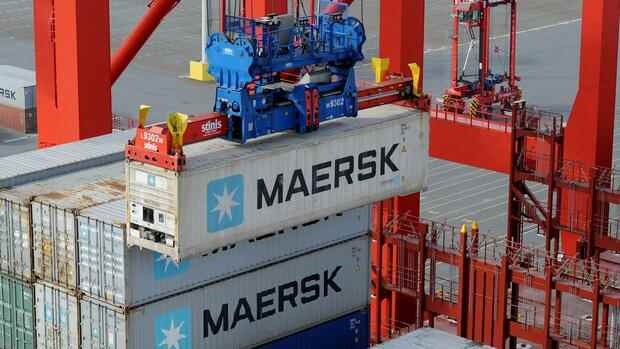Dusseldorf The new business model, with which Amazon attracts additional dealers to the group’s own marketplace, is like a bet: The US group is using its own procurement logistics against the normalization of world trade.
In essence, it is the high freight rates on the spot market that make Amazon’s business possible in the first place. Since the summer of 2020, they have shot up from an average of $2,500 to $15,000 per double container, while Amazon secured long-term transport contracts with the shipping companies. The US group is now passing on the rates, which are far less affected by the price explosion, to its own marketplace dealers if they so wish.
Only: Sören Skou, head of the world’s second largest container shipping company Maersk, bet against it on Wednesday. The tense market situation, which is characterized by massive capacity bottlenecks at sea, will “continue into the second quarter of 2022,” said the Danish shipowner. In the following months, however, he expects a relaxation. When it comes to profits, 2020 will probably be more of a standstill.
Hapag-Lloyd boss Rolf Habben indicated something similar on Monday. The freight rate level of 2019 will hardly be reached in the coming years, he said. But the Dutchman also expects declines from the second quarter of 2022. The waning of the corona pandemic will ease the situation, as will the end of the labor disputes in the US ports and the enormous ship orders. “There is a 50 percent probability,” believes the Hapag-Lloyd CEO, “that sea transport will return to normal by the end of 2022.”
Top jobs of the day
Find the best jobs now and
be notified by email.
Read related to the topic:
If, as a result, transport prices collapse on the spot market, long-term contracts such as those held by Amazon could quickly lose their magnetism. At the same time, it is likely to become increasingly difficult for the online sender to secure favorable freight rates in the long term. “In the last few months, we have observed that shipping companies are reserving a larger proportion of their capacities for spot shipments,” reports Stephan Sieber, Managing Director of the Ulm freight exchange Transporeon. The available capacity for large shippers who conclude annual or multi-year contracts for a certain transport volume is currently being reduced again, he says. “That’s why prices are rising here, too.”
More: Limits of Globalization: The Supply Chain Odyssey of an LED TV
